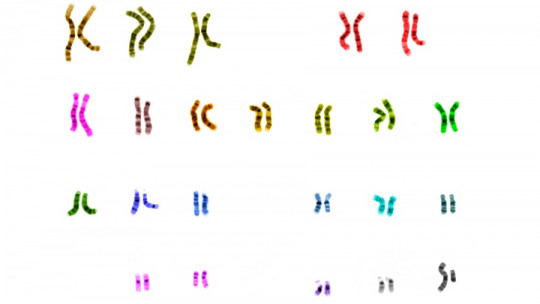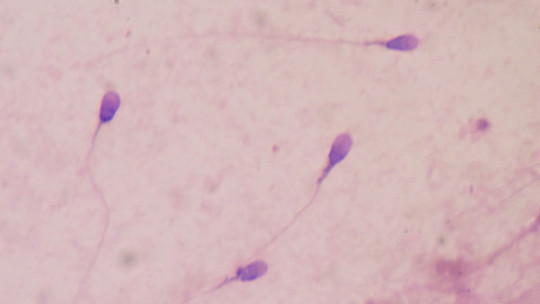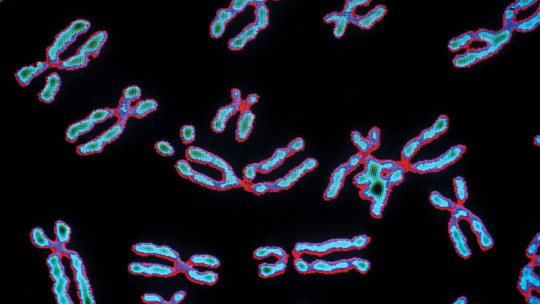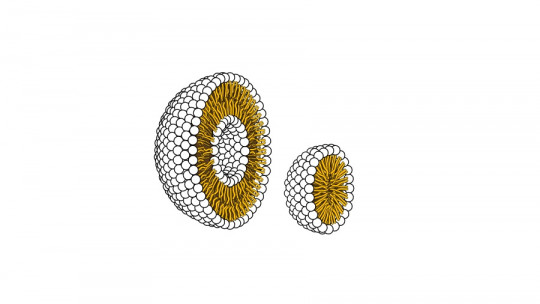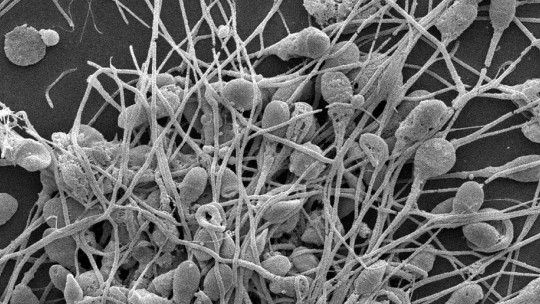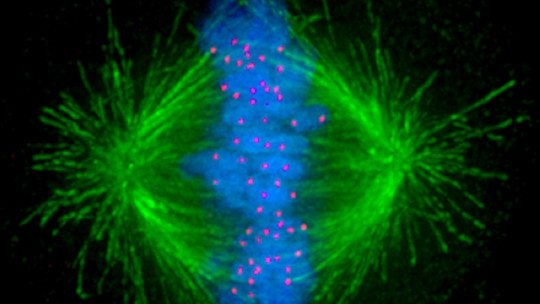DNA is the library of life, since it contains all the information necessary for the growth, development, reproduction and death of organisms, no matter how simple they may be at an anatomical level. Beyond allowing us to exist, This nucleic acid enables the inheritance of genes between generations and, therefore, the evolutionary process that has given rise to all the taxa that inhabit the Earth today.
Based on heritable point mutations and the genetic recombination that occurs during sexual reproduction, living beings “advance” genetically and natural selection favors the predominance of certain evolutionarily viable characters over others. For example, if tree bark is darkened for X or Y reason, butterflies of a darker species will be more likely to survive than their lighter counterparts, as they are better camouflaged in the environment due to prior adaptation.
Based on this simple premise, natural selection, genetic drift and other stochastic processes model the genetic pools of populations of living beings over time. In any case, before understanding the functioning of genes and evolution on a “macro” scale, it is necessary to establish certain essential foundations. For this reason, today we go back to the basics: learn with us the 6 parts of the chromosome structure that houses the DNA of living beings.
The bases of genetics
A gene is defined as a particle of genetic material that, together with others, is arranged in a fixed order along a chromosome. The function of the gene (genotype) is to determine the appearance of hereditary characteristics in living beings, including those that can be quantified with the naked eye (phenotype).
Even more interesting is to know that, classically, each gene has 2 different alleles , that is, alternative forms of the same gene. Variations in these genes usually translate into phenotypic changes, such as hair color, eyes, blood group or the appearance and absence of certain diseases. By having 2 alleles per gene, an individual can be homozygous for a character (AA, for example, the two alleles are the same) or heterozygous for the same character (Aa, the alleles are different).
Human beings have 23 pairs of chromosomes in (almost) all of our cells, a total of 46. Since these come “paired”, it is easy to deduce that one allele will come from the father and the other from the mother. Thus, half of the genetic information that makes up us comes from one parent and, consequently, the other half from the other.
Based on this premise, we can affirm that All somatic cells in our body (non-sexual cells) are diploid (2n), having 2 complete sets of chromosomes in the nucleus Diploidy has a clear evolutionary meaning, since, if a gene from the father mutates or is defective, it is expected that the mother’s copy can solve or mask this error.
This express class of genetics is based on the most basic possible, since there are many characters that are encoded by more than one gene (they are polygenic) and some alleles are dominant (A) over others (a). Sometimes, for a disease to manifest itself, it is only necessary for one of the 2 copies of the gene to be defective, but that is a topic for another time.
What are the parts of the chromosome?
Based on this premise, we have learned that all the cells in our body (except eggs and sperm) contain a nucleus with 2 complete sets of chromosomes, one from the father and one from the mother.
In biology and cytogenetics, A chromosome is each of the highly organized structures, made up of DNA and proteins, that contains almost all the genetic information of a living being The number of genes that each chromosome houses is variable: for example, chromosome 1 (we remember that there are a total of 23, 22 autosomes and a pair of sexual ones, multiplied by 2 because we receive a copy from both parents) contains about 2,059 genes, while that the Y chromosome, which codes for the male gender, has only 108.
This coding and non-coding DNA is organized in the form of chromatin, forming chromosomes, with a typical X shape. If we cut longitudinally (vertically) this three-dimensional shape of the chromosome, we will obtain 2 rod-shaped structures, which are called chromatids. So that, each chromosome is made up of 2 sister chromatids
After establishing these premises, we can briefly describe the parts of the chromosome. Go for it.
1. Film and matrix
The chromosome matrix It is a compound of chemical and organic nature, condensed and homogeneous, that covers the chromosomes It should be noted that its content comes from the nucleolus. On the other hand, this matrix component is surrounded by a membrane called film, which is thin in nature and made up of achromatic (colorless) substances.
2. Chromonemes and chromomeres
The chromonema is each of the filaments that make up the chromatid These filamentous structures are composed of DNA and proteins. When they roll up, they give rise to the chromomere, which joins with others like rosary beads within the chromosome. Chromomeres are granules that accompany the chromoneme along its length and, therefore, each of them contains a more or less high number of genes.
3. Centromere
The centromere It is defined as the narrow region of a chromosome that separates a short arm from a long arm Said colloquially, it is the center of the X, understanding this letter as the three-dimensional shape of the chromosome.
In any case, it should be noted that, despite its name, the centromere is not located exactly in the chromosomal center. The centromere is in the primary constriction, but this can be located more “above” or “below” the vertical plane.
So that, Each chromatid will divide into 2 arms, one short (p) and the other long (q) This gives the chromosome a total of 4 arms, remember that each one is made up of 2 sister chromatids. Based on these anatomical changes, the following types of chromosomes are conceived:
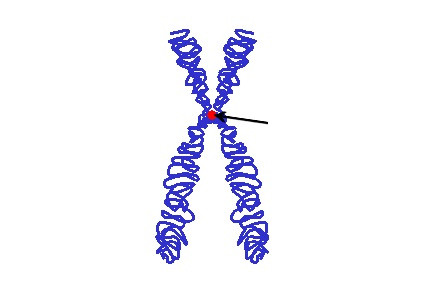
4. Kinetochore
It is a protein structure located on the centromere of the upper chromosomes. Its function is essential, since the microtubules of the mitotic spindle are anchored to the kinetochore key elements for the partitioning of genetic information to occur during mitosis.

5. Secondary constraints
They are regions of the chromosome that are found at the ends of the arms In some cases, these places correspond to the area where the genes responsible for being transcribed as RNA are located.
6. Telomeres
Telomeres are the ends of chromosomes These are highly repetitive and non-coding sequences (they do not contain genes that are transcribed into proteins), whose main function is to give the chromosome resistance and stability. These structures are especially interesting, since they contain the bases of physiological senescence and old age of living beings.
With each mitosis, telomeres shorten a little more, since DNA duplication is not perfect in somatic cells There comes a point at which a last cell line will no longer be able to divide due to the reduced size of the telomeres and, therefore, the tissue will die with the cell bodies, unable to rebuild itself with new cells. This explains a large part of cell death (and therefore organisms).
As a final curiosity, it should be noted that There is an enzyme (telomerase) that rebuilds telomeres during fetal development At the moment of birth, somatic cells cut off their activity, so it is the organism itself that programs its senescence. Ironic as it may seem, many malignant tumors have cells with high telomerase activity: if a cell is capable of dividing “infinitely” and does not die, it is not difficult to imagine that it could become cancer.
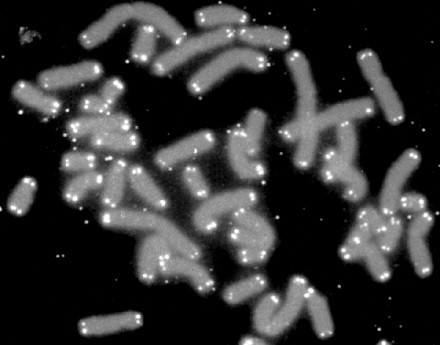
Summary
We have taken this opportunity to tell you, in a summary way, the foundations of one’s own life and inheritance. To talk about chromosomes is to encompass a whole, since DNA explains each and every one of the physical and emotional manifestations at the level of both the individual and the species.
This double helix contains the secret of life, because thanks to it we remain dead even after centuries in the genetic imprint of our relatives and relatives. Non-human living beings develop all their behaviors based on this premise: remaining at an individual level is not important, since the ultimate goal is to spread the genes as much as possible and leave an indelible mark.


